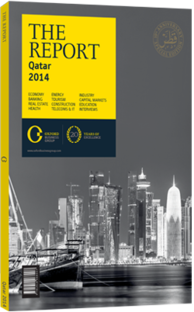Investing in capacity: Expansion is under way at home and abroad
To provide water and power services to its residents and companies, Qatar has invested heavily to build the production capacity needed. The Qatar General Electricity & Water Corporation, known as KAHRAMAA, reports investing more than $9.6bn to upgrade the electricity network between 2000 and 2008. According to Drake & Scull, an international engineering firm, the government has a pipeline of investments worth over $125bn in the water and power sectors. The company’s recent report on the water sector notes that the government will invest $60bn on infrastructure in 2013/14 alone, with at least 30% going towards electricity and water projects. Investments will include building 140 new power stations, 810 km of water mains and five new water reservoirs.
World Cup
While the 2022 FIFA World Cup is driving the timeline of some of these projects, the investments align with KAHRAMAA’s broader investment strategy as outlined under the 30-year power and water master plan. One of the biggest ongoing projects is the construction of a $3bn water reservoir network that will eventually have the capacity to supply the country with water for seven days. The facility will include a series of reservoirs connected by a 183-km pipeline that also links up with the Ras Laffan and Ras Abu Fontas desalination plants. Total reservoir capacity is expected to eventually exceed 3.5bn gallons, increasing the current storage capacity by a factor of 10.
Independent Plants
The government is also currently developing more independent water and power plants. Facility D, to be located near Doha, will have a total capacity of 2400 MW of power and 130m imperial gallons per day (MIGD) of water. The desalination plant will utilise reverse osmosis to purify water. The Public Works Authority is currently assessing the feasibility of expanding the Doha West wastewater treatment plant to a total capacity of 180,000 cu metres per day. It is also developing a wastewater treatment plant at Doha North. The plant is set to have a capacity of 439,000 cu metres per day. Singapore-based Keppel Seghers won the contract to build the plant under a 10-year design-build-operate agreement. This will be one of the first plants to include a sludge treatment facility. According to Keppel Seghers, the treatment plant will utilise technology to dry the product to create fertiliser and fuel pellets.
Expanding Overseas
In addition to building water and electricity production capacity to meet domestic needs, Qatar is increasingly investing in utilities abroad.
The Qatar Electricity and Water Company (QEWC) is leading the way in this regard. The company, in collaboration with the government, established a $1bn investment fund dedicated to utilities abroad. QEWC owns a 60% stake in Nebras Power, while Qatar Holding and Qatar Petroleum International will own 20% each. The utilities investment fund is expected to invest mainly in markets with rapidly growing utilities with a particular focus on the Middle East and East Asia.
QEWC also owns shares in a number of foreign entities. The company purchased a 38.89% stake in AES Oasis from the Islamic Development Bank in 2012. This gives it a 60% stake in the company’s 370-MW AES Jordan Amman East power plant. “The purchase of shares in AES Jordan…is the first such acquisition by QEWC outside Qatar as planned by the board of directors,” QEWC stated. QEWC aims to “enter the global market in the next few years in order to diversify the sources of income and to expand at the regional and global level”, according to a statement from the firm.
QEWC’s other major foreign projects include the 2000-MW Sur Power project in Oman. It will cost some $1.6bn to build and the plant will eventually account for around 40% of Oman’s total power generation capacity. QEWC is also investing in an Abu Dhabi project that will deliver 1600 MW of power and 53 MIGD of water. In addition, Qatari Diar has invested in the sector, closing a deal with Veolia Environment to purchase a 5% stake in the company in 2010. This is an indication of Qatar’s long-term strategy of leveraging private sector expertise in the electricity and water sectors.
You have reached the limit of premium articles you can view for free.
Choose from the options below to purchase print or digital editions of our Reports. You can also purchase a website subscription giving you unlimited access to all of our Reports online for 12 months.
If you have already purchased this Report or have a website subscription, please login to continue.

